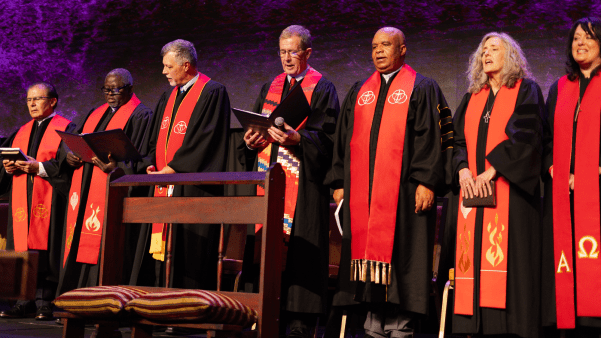Despite the great increase in the general population, the over-all picture for the Church of England, reveals a vast breakaway from the life and dedication of the church, and a lingering belief that the maintenance of some link with the church is prudent. The church’s ministerial manpower and reserves are seriously depleted. The lessened sense of missionary responsibility among churchgoers gives evidence that the spiritual quality of Christian commitment today contrasts unfavorably with that of earlier generations.
The information which follows is taken in the main from Facts and Figures About the Church of England, published by the Church Information Office in 1959. Unless otherwise stated, the figures apply to 1956, the year of the census, and are the most accurate now available.
POPULATION
Estimated population of the provinces of Canterbury and York: in 1851, 16,896,189; in 1956, 42,227,000. Number of “livings” (as of Dec. 31, 1958): 11,533, of which 1,027 were vacant. Of these, 6,687 have one church, 3,551 two churches, 1,027 three churches, and 268 have more than three churches. Of these livings, 3,185 had populations over 750; 5,090 had populations between 750 and 4,999; 2,193 had populations between 5,000 and 9,999; and 1,024 were over 10,000. The total number of churches and chapels in 1958, including extra-parochial buildings, was 20,289.
MANPOWER
1. The Number of Clergy: Total number of clergy working full time, 14,454. There are 43 archbishops and bishops, 77 suffragan and assistant bishops, 10,357 beneficed incumbents, 2,645 assistant curates and curates-in-charge, and 727 retired clergymen working part-time.
2. The Age of Clergymen: In 1851, the proportion of all clergymen under the age of 35 was 30 per cent; in 1951, 10 per cent. In 1851, the proportion of all clergymen over 75 was 3 per cent; in 1951, 12 per cent—in other words, there are now more clergymen over 75 than under 35.
3. Ordination of Deacons: The numbers for the last ten years are: (1951) 411; (1952) 479; (1953) 472; (1954) 444; (1955), 446; (1956) 481; (1957) 478; (1958) 514; (1959) 512; (1960) 601. At least 600 deacons are required to be ordained every year, simply to make good the losses by death and retirement. To make a real and fairly quick recovery from the accumulated losses of the last 50 years would call for at least 1,000 ordinations of deacons every year.
4. Licensed Lay Readers: Generally business or professional men who give help freely on Sundays in their own parishes or in the diocese total 5,971. Full-time workers: Church Army workers, 142 men, 130 women; deaconesses, 119; women workers, 441; other workers, 579. Total: 6,279 men; 1,103 women.
TELL-TALE FIGURES
The following figures reveal on the one hand a widespread desire for some link with organized religion. But on the other hand there is little corresponding consistency of religious observance. Some 66 per cent (26,771,000) of the population have received baptism in the Church of England; 24 per cent (9,691,000) have been confirmed; 6 per cent (2,348,354) received communion on Easter Day.
Marriages per thousand of the population reveal the sharp breakaway from the Church:
The increase in Roman Catholic marriages is undoubtedly due, in part, to pressure against mixed marriages.
The total number of Sunday school scholars is 1,307,662; the total number of teachers, 101,330. Television and the motor car have seriously affected Sunday school attendance.
Stewardship campaigns are a common church activity today, but their effect upon missionary giving remains to be seen. The proportion of expenditures on overseas missions has decreased. In 1906, it was 6.5 per cent; in 1956, 3.1 per cent.
Samuel M. Shoemaker is the author of a number of popular books and the gifted Rector of Calvary Episcopal Church in Pittsburgh. He is known for his effective leadership of laymen and his deeply spiritual approach to all vital issues.










